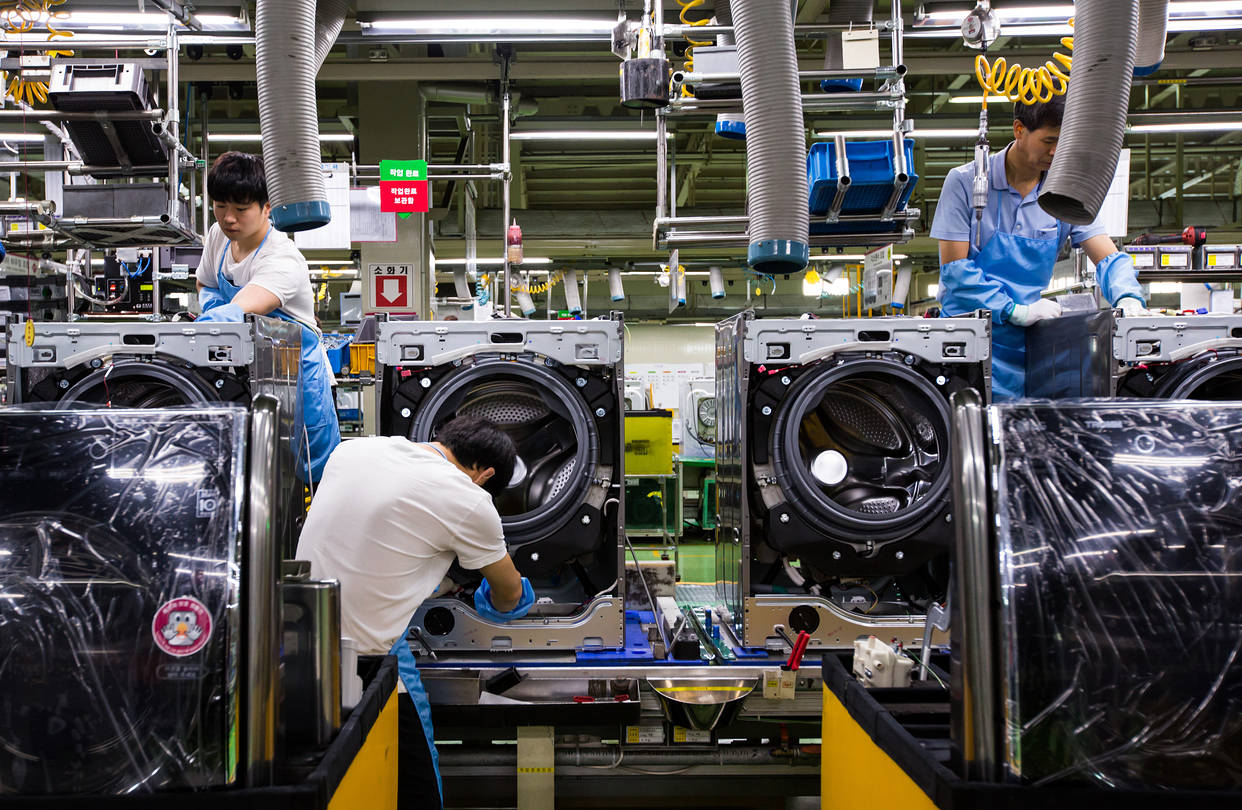A simultaneous downturn in economic indicators raises the possibility of the South Korean economy weakening in the second half to the extent of making it hard to achieve the official 2018 growth target of 2.9%.
Preliminary data released by the Bank of Korea last week showed Asia’s fourth-largest economy grew 0.7% on-quarter in the April-June period, decelerating from a 1% rise in the first quarter, Yonhap reported.
Finance Minister Kim Dong-yeon, who doubles as deputy prime minister for economic affairs, described the growth estimate by the central bank as roughly in line with the government’s forecast, saying the economy does not seem to have deviated from its recovery path.
The on-quarter growth of 0.7% may not necessarily be seen as discouraging. Calculated into an annualized rate, it is equivalent to the country’s yearly growth potential, which is estimated to be between 2.8 and 2.9%.
But scrutiny into economic indicators showed the second-quarter growth managed to remain in the positive territory as a simultaneous slump in consumption, investment and exports was offset by a decrease in imports, which are factored into reducing growth.
Consumption, Investments Decline
According to the latest figures from the central bank, private consumption increased 0.3% in the April-June period, down from 0.7% in the previous three months.
Facility investment and construction investment, which grew 3.4% and 1.8% in the first quarter, shrank 6.6% and 1.3%, respectively, in the second quarter.
“Slumping private consumption amid declining investment means that the vitality of the overall economy is being sapped,” said Ju Won, an economist at the Hyundai Research Institute, a private think tank.
The country saw the increase in exports, which have bolstered its economic growth in the past years, slow from 4.4% in the first quarter to 0.8% in the following three months. Aside from a rise in the overseas shipment of semiconductors, Korea’s exports recorded a negative growth in the April-June quarter.
What enabled the Korean economy to grow in the second quarter amid the slowdown in domestic demand and exports was a 2.6% decrease in imports. In particular, the import of manufacturing equipment fell sharply as local firms cut or suspended planned investments amid deteriorating business conditions at home and abroad.
Economists Cautious
Bank of Korea analysts say the 2.9% growth target for this year could be achieved if the growth rate reaches between 0.82 and 0.94% in the third and fourth quarters. But many economists express more cautious views.
According to a recent survey by the Korea Chamber of Commerce and Industry, the business sentiment index for the local manufacturing industry remained at 87 for the third quarter, marking a 10 percentage point drop from the previous quarter.
The estimate of the combined operating profits of 239 major listed Korean firms for the July-September period, based on a consensus among local brokerage houses, dropped from 56.2 trillion won ($50.3 billion) three months ago to 55.5 trillion won last week.
Experts note planned US interest rate hikes and an escalating trade war between the US and China will further hold back Korean companies from increasing investments.
Domestic demand, which has not shown signs of rebounding despite massive fiscal spending over the past year, is expected to continue to remain sluggish in the second half as employment conditions and consumer sentiment worsen.
Curbing High Interest Loans
The financial watchdog said Monday it will step up monitoring of savings banks that have sold loans with high interest rates to people with lower credit scores.
At the end of May, the outstanding value of household loans by savings banks stood at 22.2 trillion won ($19.9 billion), accounting for 40.6% of their total loans, the Financial Supervisory Service said in a statement.
The average net interest margin of savings banks, a key barometer of a bank's profitability, was 6.8% at the end of March, compared with 1.7% of commercial banks.
Even though loan-loss provisions were taken into account, the average net interest margin of savings banks was 4%, compared with 1.5% of commercial banks. The FSS said net interest margins of some savings banks were "too high".
Also, some savings banks have reported higher profits because of their household loans with high interest rates, the FSS said. The financial authorities have called for savings banks not to charge too high interest and threatened to crack down on such institutions.


